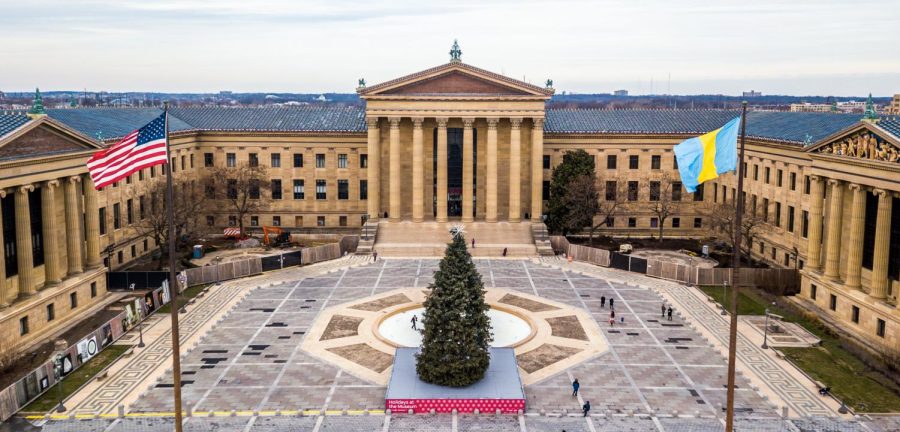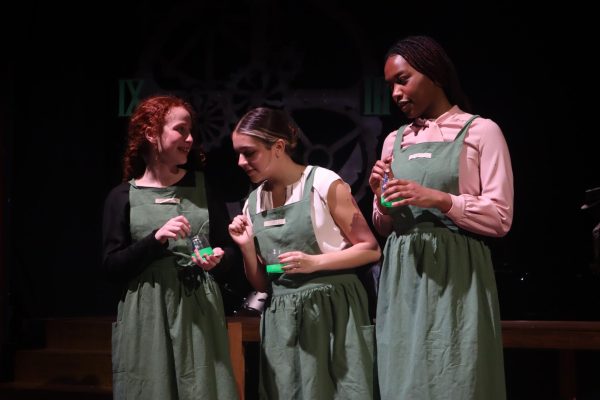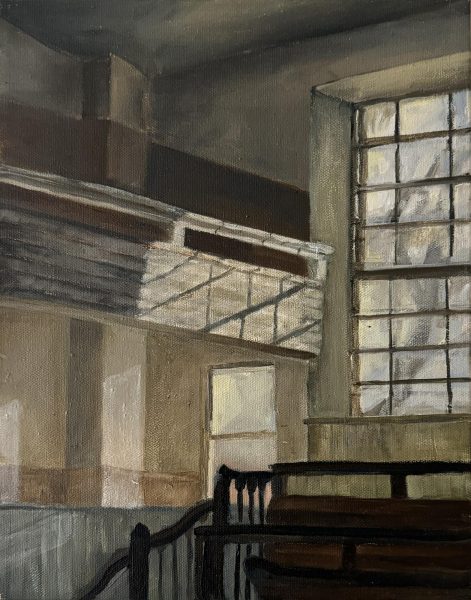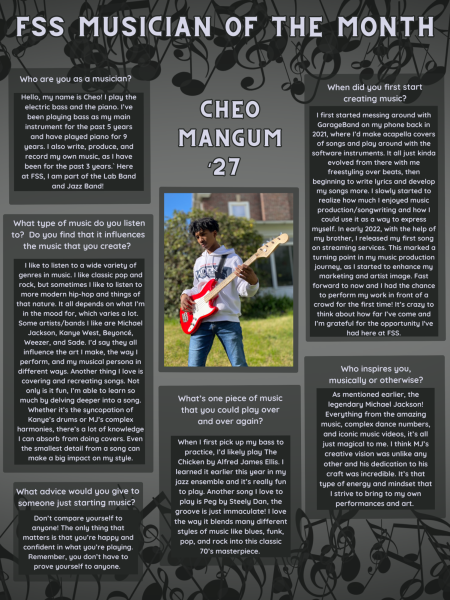Art Museum Workers Wake the Philadelphia Labor Movement
Only a few days into the strike at the Philadelphia Museum of Art, the sky had already opened up. The remnants of hurricane Ian had reached Philadelphia and were pelting the strikers with wind and rain, but the picket line stood firm. Not a single worker broke rank to retreat into the welcoming warmth of the grand neo-classical building on the parkway. When the storm passed, the union’s resolve was hardened and tempered. They had conquered the forces of nature, now only the boss stood in their way.
In 2019, working conditions at the Philadelphia Museum of Art reached a flashpoint. The Art and Museum and Transparency Salary Spreadsheet was making the rounds on the internet, exposing the unfair labor practices of cultural institutions around the country, especially the Philadelphia Museum of Art. The spreadsheet allowed museum workers to anonymously enter their demographic details, place of employment, benefits, and salary. “What became very clear was that… within my institution there were lots of pay disparities, many of which could not be easily explained.” PMA Union president Adam Rizzo says. “For instance, there’s a woman who I worked with who has worked at the museum for longer than me– same level, same title. And she was making $7,000 a year less than me. And the only explanation I could guess… was that it was because I identify as a man and she identifies as a woman.”
Analysis of the spreadsheet confirms the harsh reality that PMA workers were facing. One of the most egregious examples of mistreatment is the art museum’s policy on parental leave, or rather, the lack thereof. Several workers indicated that they received zero pay and benefits and were only allowed 12 weeks of family medical leave. In addition, workers wrote that they “must pay back health insurance costs at the end of leave, out of future paychecks” and were “encouraged to bank sick time for maternity cover.” In other words, workers were forced to cover insurance payments with money that they had not made yet. They were actively encouraged to come into work sick during the early stages to “save up” more days for parental leave. This latter charge was confirmed by Adam Rizzo, who says, “I have colleagues… who were saving vacation days and sick days in order to start a family and be able to have paid family leave.”
Inhumane parental leave policies were certainly not the only violation of museum workers’ medical rights. According to Adam Rizzo, “90% of folks at the museum are on a high deductible healthcare plan, which means that even though you have health insurance, you can’t afford to go to a doctor.” On top of that, he says, “Philadelphia is an expensive city. A lot of folks who work at the museum have to work two jobs, they can’t afford to use the health care they’re given.” When museum workers became aware of the multitude of disparities they and their colleagues were facing, it was only a matter of time before whispers of organization turned into real action.
As Adam Rizzo details it, the hierarchy of command within the museum made it very difficult for departments to begin unionizing. He says, “One of the reasons it was very hard is because…our work is very… siloed… we had to break down those silos.” However, an anti-union managerial structure would be the least of their worries. As soon as the Museum heard whispers of a union, they called in the help of a “union avoidance” law firm known as Morgan, Lewis & Bockius. The union-busting law firm is notorious for serving some of the most powerful capitalists and politicians, often defending “seemingly” opposing interests. At this point, it was clear that museum management was prepared to go to war with any attempt at workers’ self-advocacy. However, museum workers persisted, often meeting in apartments to discuss their conditions. Eventually, this covert organization led to a successful union election affiliated with the American Federation of State, County and Municipal Employees (AFSCME).
With the support of their union, museum workers began negotiating a better contract. However, as Adam Rizzo details, the museum was hardly receptive. “We had been negotiating for two years to get our first contract, and we hadn’t even gotten through all the ‘non-economic’ issues,” Adam says. “So we decided that the only… leverage we had was to withdraw our labor.” After a 24-hour warning strike, it was clear that the museum had firmly entrenched itself and would not budge without a fight. What occurred next was a three-week-long strike that would test the resolve of PMA workers and their union.
The strikers strategically used the upcoming Matisse exhibit to divert the press and pressure the museum. In an expected move by the museum, they hired scabs (people hired to work while union workers are on strike) to hang paintings. However, Adam says, “When we went back into work and I saw them, everything was not fine. They installed the show, but there were a number of major [pieces] that were still in crates that had not been installed… it was a little bit of a hot mess.” In addition to the museum’s failure to properly install their exhibit, strikers had successfully gained press attention, diverting public attention to the struggle.
After around 19 days of holding the picket line, museum management was overwhelmed. The workers put forward their contract and won many benefits including paid parental leave, longevity pay, and a more affordable healthcare plan. Adam Rizzo says, “I think we got most everything we wanted. It could always be better. But that’s for the next contract.”
To conclude, Adam Rizzo leaves a message for workers around the country. “I don’t know what things look like moving forward, but I am… encouraged seeing all of the labor organizing happening in many different sectors, like museums, Starbucks, Amazon… everything.”
The content in this article is representative of the opinions of the individual student journalist and does not represent the views of Friends Select School.











